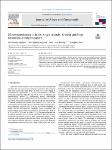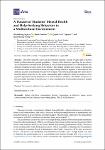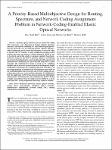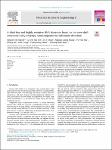Search
Author
- Dao Thanh Hai (2)
- Nguyen Huu Tung (2)
- Tu Le Manh (2)
- Van-Duong Dao (2)
- next >
Subject
- Danshen (1)
- Lamiaceae (1)
- Salvia miltiorrhiza (1)
- triterpene. (1)
- next >
Has File(s)
- true (14)
Search Results
University students, especially international students, possess a higher risk of mental health problems than the general population. However, the literature regarding the prevalence and determinants of mental health problems as well as help-seeking behaviors of international and domestic students in Japan seems to be limited. This dataset contains 268 records of depression, acculturative stress, social connectedness, and help-seeking behaviors reported by international and domestic students at an international university in Japan. One of the main findings that can be drawn from this dataset is how the level of social connectedness and acculturative stress are predictive of the reported depression among international as well as domestic students. The dataset is expected to provide re... |
In this study, we present a low-cost and simple method to treat spent lead–acid battery wastewater using quicklime and slaked lime. The sulfate and lead were successfully removed using the precipitation method. The structure of quicklime, slaked lime, and resultant residues were measured by X-ray diffraction. The obtained results show that the sulfate removal efficiencies were more than 97% for both quicklime and slaked lime and the lead removal efficiencies were 49% for quicklime and 53% for slaked lime in a non-carbonation process. After the carbonation step, the sulfate removal efficiencies were slightly decreased but the lead removal efficiencies were 68.4% for quicklime and 69.3% for slaked lime which were significantly increased compared with the non-carbonation process. This ... |
A core-shell cerium oxide nanorod@polypyrrole (CeO2-NR@Ppy) nanocomposite-based electrochemical DNA biosensor was studied for Salmonella detection. The core-shell CeO2-NR@Ppy nanocomposite was prepared by in situ chemical oxidative polymerization of pyrrole monomer on CeO2-NRs, which provided a suitable platform for electrochemical DNA biosensor fabrication. The immobilization of ss-DNA sequences onto nanocompositecoated microelectrode was performed via covalent attachment method. DNA biosensor electrochemical responses were studied by cyclic voltammetry and electrochemical impedance spectroscopy with [Fe (CN)6] 3−/4− as redox probe. Under optimal conditions, DNA biosensor response showed good linearity in the range of 0.01–0.4 nM with sensitivity of 593.7 Ω·nM−1·cm−2. The low limit... |




